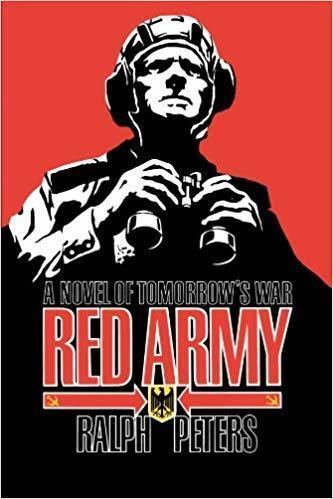7.8 /10 1 Votes
Cover artist Osyczka Limited Subject World War III Publication date 1989 Originally published 1989 Page count 403 (Paperback) Country United States of America | 3.9/5 Goodreads Language English Publisher Pocket Books Pages 403 (Paperback) Genre Alternate history | |||||||||||||||||||||||||||||||||
 | ||||||||||||||||||||||||||||||||||
Similar Ralph Peters books, Techno-thriller books, Other books | ||||||||||||||||||||||||||||||||||
Red Army is a 1989 Cold War-era military novel written by U.S. Army intelligence analyst Ralph Peters. The book considered a World War III scenario involving a Soviet attack on West Germany across the North German Plain.
Red Army was unique among military fiction published in the United States during the 1980s, in that it told its story exclusively from the perspective of officers and men in the Soviet Army.
Plot summary
The book takes the perspective of soldiers with the Group of Soviet Forces in East Germany as they prepare to launch an invasion of West Germany. Soviet General Mikhail Malinsky, Commander of the First Western Front, discusses the invasion with other Red Army leaders. The plans call for a simultaneous thrust on three fronts: across the North German Plain, through the Fulda Gap, and across Bavaria. NATO commanders are to be bluffed into thinking the main assault will come at the Fulda Gap, but the main effort will be on the North German Plain, led by Malinsky. Airborne forces will be dropped deep into West Germany to disrupt the NATO rearguard.
The Soviet commanders believe that if Soviet forces are deep inside West Germany in three days, NATO will not be able to use nuclear weapons to blunt the advance. A Soviet propaganda film about the destruction of Lueneberg (carefully produced at a Moscow studio) will also add psychological shock to the West Germans.
When the invasion begins, the Soviets advance quickly, bypassing strong points whenever possible. The successful capture of a NATO command post and a Soviet tank company's capture and shepherding of a German refugee convoy outside Hildesheim adds to the speed of movement. The West German forces positioned on the inter-German border are gradually cut off from resupply and a unit stuck on the Cuxhaven peninsula fights to the last man. Deprived of reconnaissance assets, however, Malinsky worries that the US Army forces based near the Fulda Gap will come to the aid of the British, Dutch, and West German forces that he faces.
Day three of the war finds the Soviets nearing the industrial Ruhr valley. Hoping to forestall a complete West German collapse, remaining NATO forces in the north, joined by the strong and relatively unbloodied US Army from the south, hit Malinsky's First Western Front from all sides. It is not enough. Before the NATO counterattack has a chance to succeed, the West German government asks the USSR for a cease-fire, and in the aftermath, the Red Army occupies all of Germany east of the Rhine.
